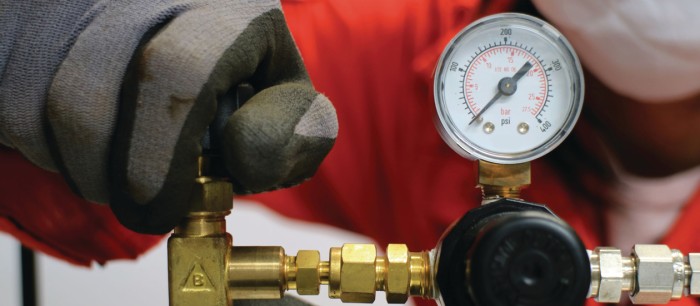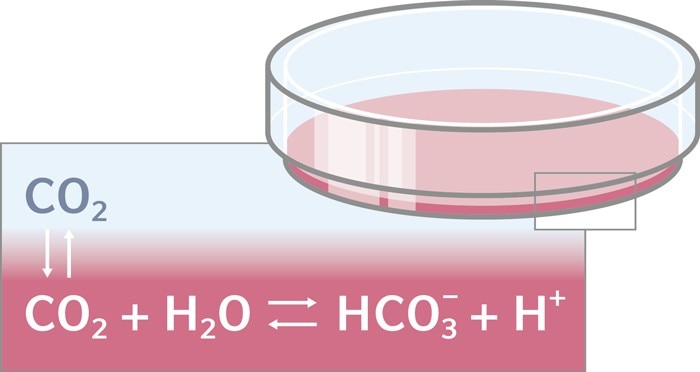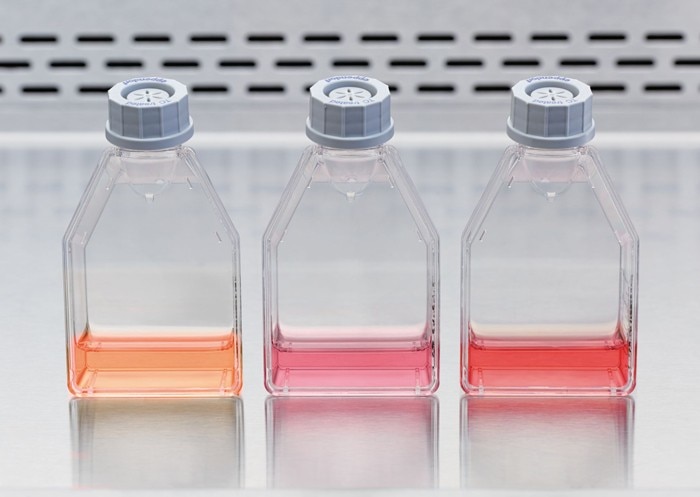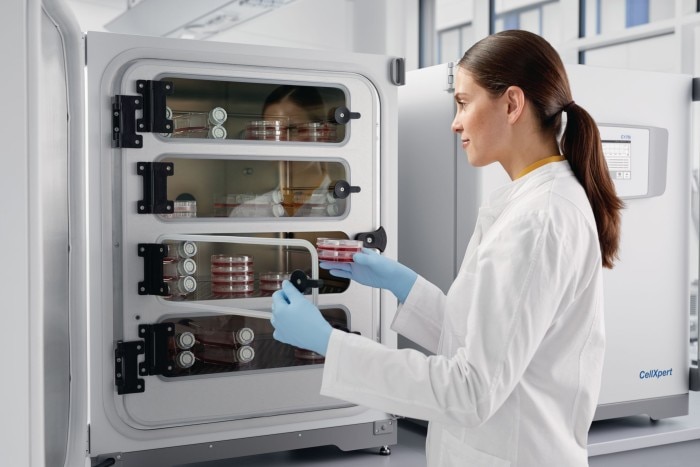MENU
PL | PLN
PL | PLN
Nie znaleziono wyników
Sugestie wyszukiwania

How much CO2 does an incubator use?
Akademia laboratoryjna
- Biologia komórki
- Zrównoważony rozwój
- Hodowla komórek
- Rutynowe prace laboratoryjne
- Wydajność
- Inkubatory CO2
- FAQ
Ask the expert - Answer by Dr. Jessica Wagener, Application Specialist Cell Handling at Eppendorf
This article was published first in "Inside Cell Culture" , the monthly newsletter for cell culture professionals. Find more interesting articles about CO2 incubators on our page "FAQs and material on CO2 incubators" .
Przeczytaj mniej
Introduction
Often underrated, gas consumption (CO2 and N2 – depending on requirements) can be a significant cost factor in a cell culture lab and easily exceed the purchase price of a CO2 incubator over its lifetime. This can be due to the costs of gas itself, but also due to the necessary employment of staff to frequently change gas cylinders. In addition to the cost factor, the impact of the CO2 on the labs overall carbon footprint needs to be considered. Thus, a low CO2 consumption of an incubator not only saves costs in the lab, it also lowers the impact on global warming.
Przeczytaj mniej
Why is CO2 needed for mammalian cell culture?
The CO2 gas that is supplied to the incubator regulates the resulting pH in the culture media that are used to grow the cells in vitro. Common culture media for eukaryotic cells provide a buffering system containing sodium hydrogen bicarbonate. Inside the incubator, an equilibrium between the CO2 in the atmosphere and the sodium bicarbonate dissolved in the culture medium develops (fig. 1).
Przeczytaj mniej

Figure 1: The principal of bicarbonate buffering in cell culture media
Most often, a CO2 level of 5% is used to incubate mammalian cells. This percentage of CO2 is optimal for most media to be buffered at a physiological pH of 7.2 to 7.4 for a couple of days. Within a few days, the cultured cells have secreted so many acidic waste products into the medium that the carbonate buffering system has reached its maximum buffering capacity. As a result, the medium gets more and more acidic and – in cases where it contains phenol red as pH indicator - the acidification is also indicated by a color change (fig. 2)
Przeczytaj mniej

Figure 2: pH dependent color change in phenol red containing culture media.
CO2 consumption is influenced by user habits and incubator model
The CO2 gas that is supplied to the incubator can be a significant cost factor in a cell culture lab, especially when you not only consider gas prices but also the time and labor required for exchanging gas cylinders. Depending on the incubator model that is used and the frequency of incubator door openings, a significant amount of CO2 is needed to recover and maintain the optimal level for mammalian cell culture (usually 5% CO2). Every time the door of the CO2 incubator is opened, the atmosphere inside gets disturbed. Temperature, gas level, and humidity need to equilibrate again to keep the cells in optimal conditions. This problem becomes more pronounced the more often and the longer the door is opened during the day. Even without opening the incubator door, the differences in CO2 consumption can differ significantly between incubator models as shown in table 1. Key structural factors to ensure low CO2 consumption are tight sealings and precise production and fit of all door parts (clearance; see also our flyer on cost reduction in the cell culture lab
Przeczytaj mniej
| CO2 incubator model (160-170L Volume) | CO2 gas consumption [Liter/day] |
| CellXpert® | 0.3 |
| Incubator B | 3.0 |
| Incubator C | 14.4 |
Przeczytaj mniej
Table 1: CO2 gas consumed over 24h without door opening. Mid-sized CO2 incubators from different manufacturers differ significantly in the amount of gas that is required to maintain the desired setpoint of 5% CO2.
Przeczytaj mniej
Benefits of a segmented inner CO2 incubator door
Of course, in the daily lab routine, incubator door openings cannot be avoided. Figure 4A exemplarily shows the CO2 consumption in different incubators including several door openings over a period of one week. Especially in larger cell culture laboratories, CO2 incubators are often shared by several users, which further increases the frequency of door opening events. In these cases where door openings cannot be reduced, an incubator with a segmented inner door is a good choice as it can help to reduce the CO2 consumption significantly (exemplarily shown in figure 4B). In this example, the life span of a gas cylinder is prolonged 2-3 times compared to an unsegmented glass door. This dramatically decreases the workload of exchanging empty gas bottles. See also White Paper 62: CO2 incubators with segmented doors – benefits and buying considerations
Przeczytaj mniej
_700.png)
A)
_700.png)
B)
Figure 4: CO2 gas consumed during one week, including door openings (setpoints: 5% CO2, 37 °C): 3x 30 s door openings per day at 5 days a week.
A) different incubator models (160 - 170L total volume),
B) CellXpert CO2 incubator with different door configurations
A) different incubator models (160 - 170L total volume),
B) CellXpert CO2 incubator with different door configurations
Przeczytaj mniej
Summary – How to reduce CO2 consumption of an incubator
- Consider buying an incubator with a segmented inner door (for some incubator models retrofitting is possible)
- Track the number of incubator door openings per day
- Generally, avoid long and frequent door openings whenever possible to improve the carbon footprint of your CO2 incubator
- Keep your CO2 incubator contents organized to relocate vessels faster
- Use separate incubators for maintenance cultures and running experiments
- Before buying a new CO2 incubator compare data for gas consumption between different models
Przeczytaj mniej
Videos not loading, because cookies have been rejected. Change your



